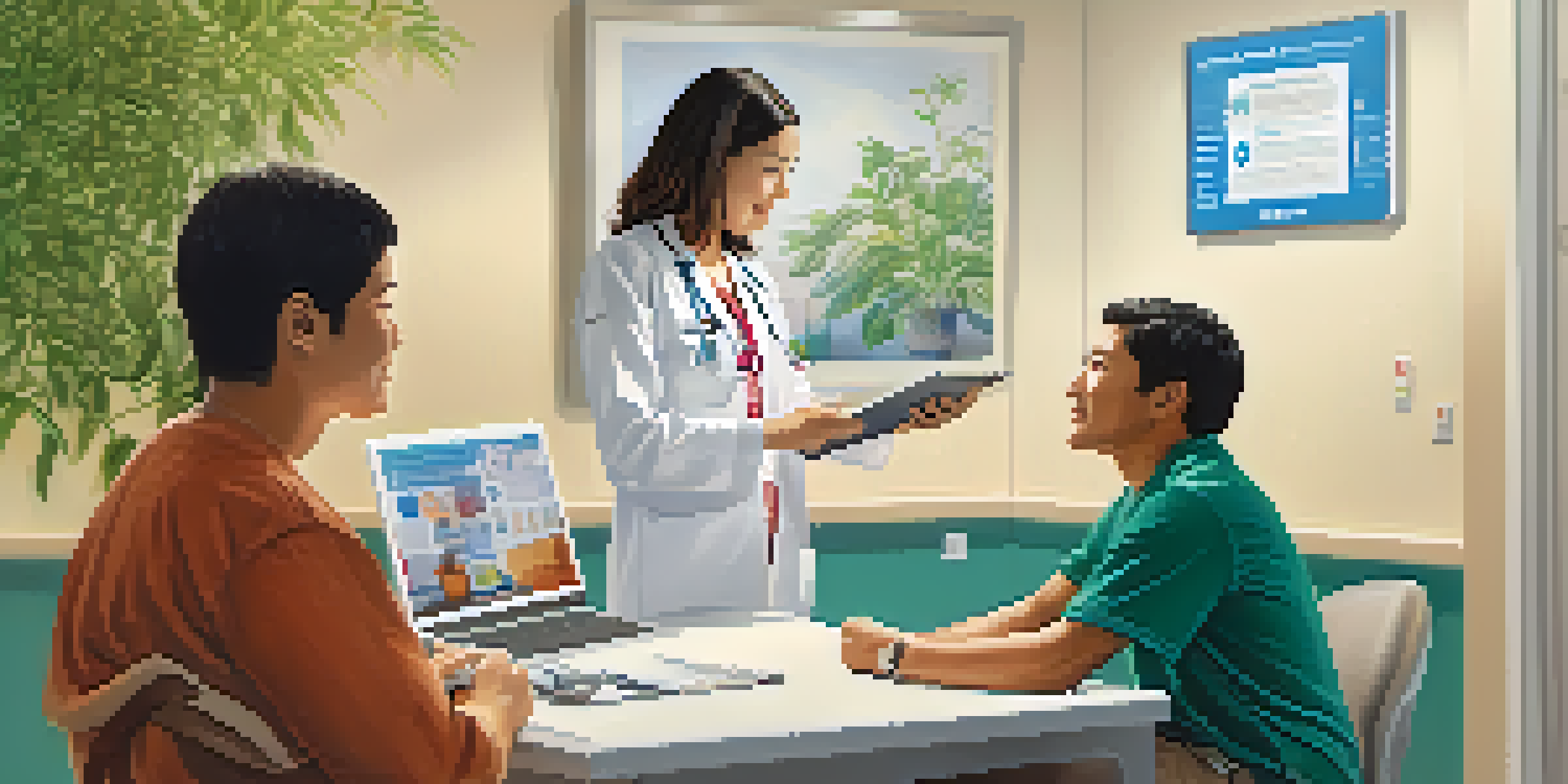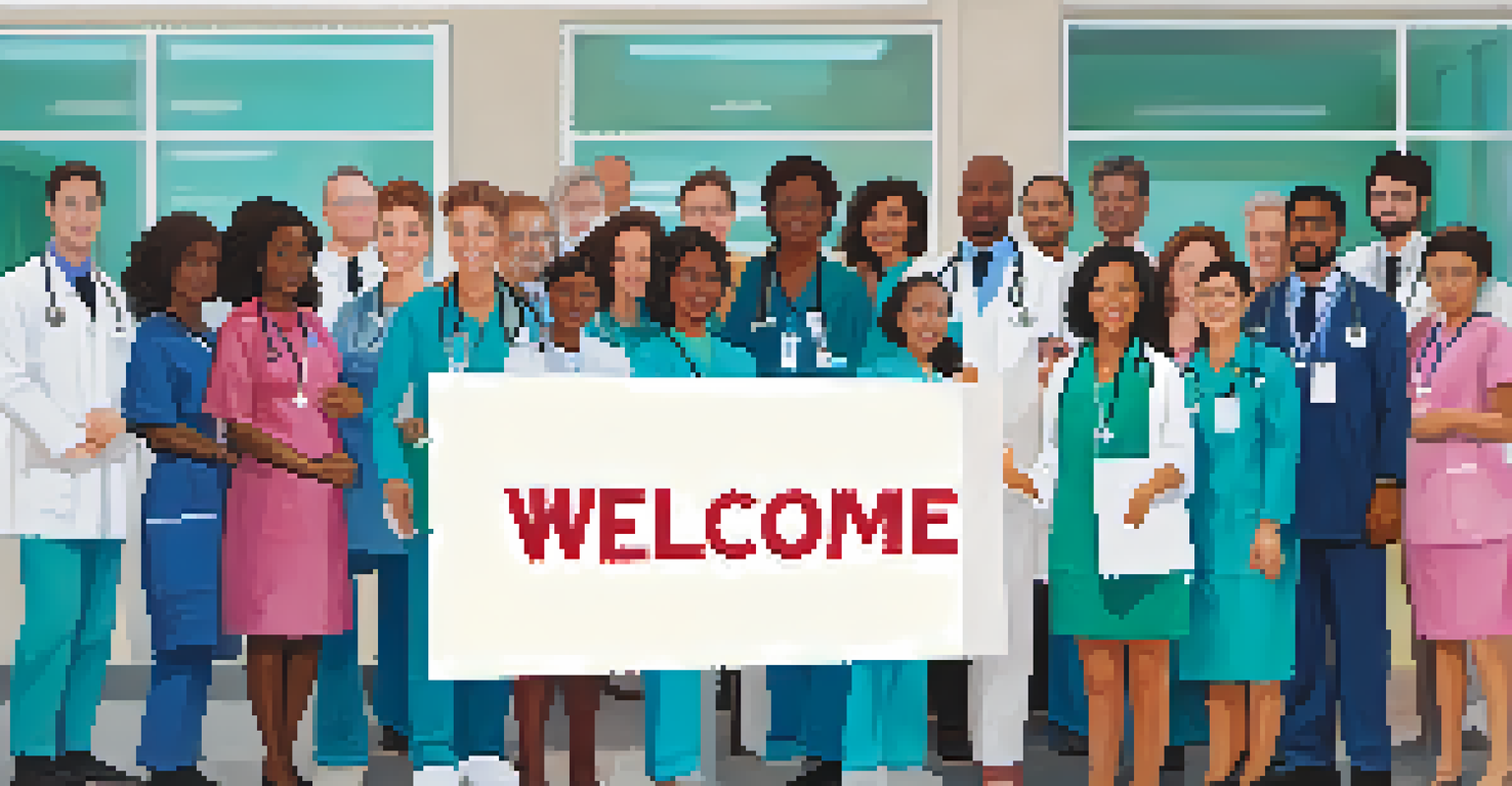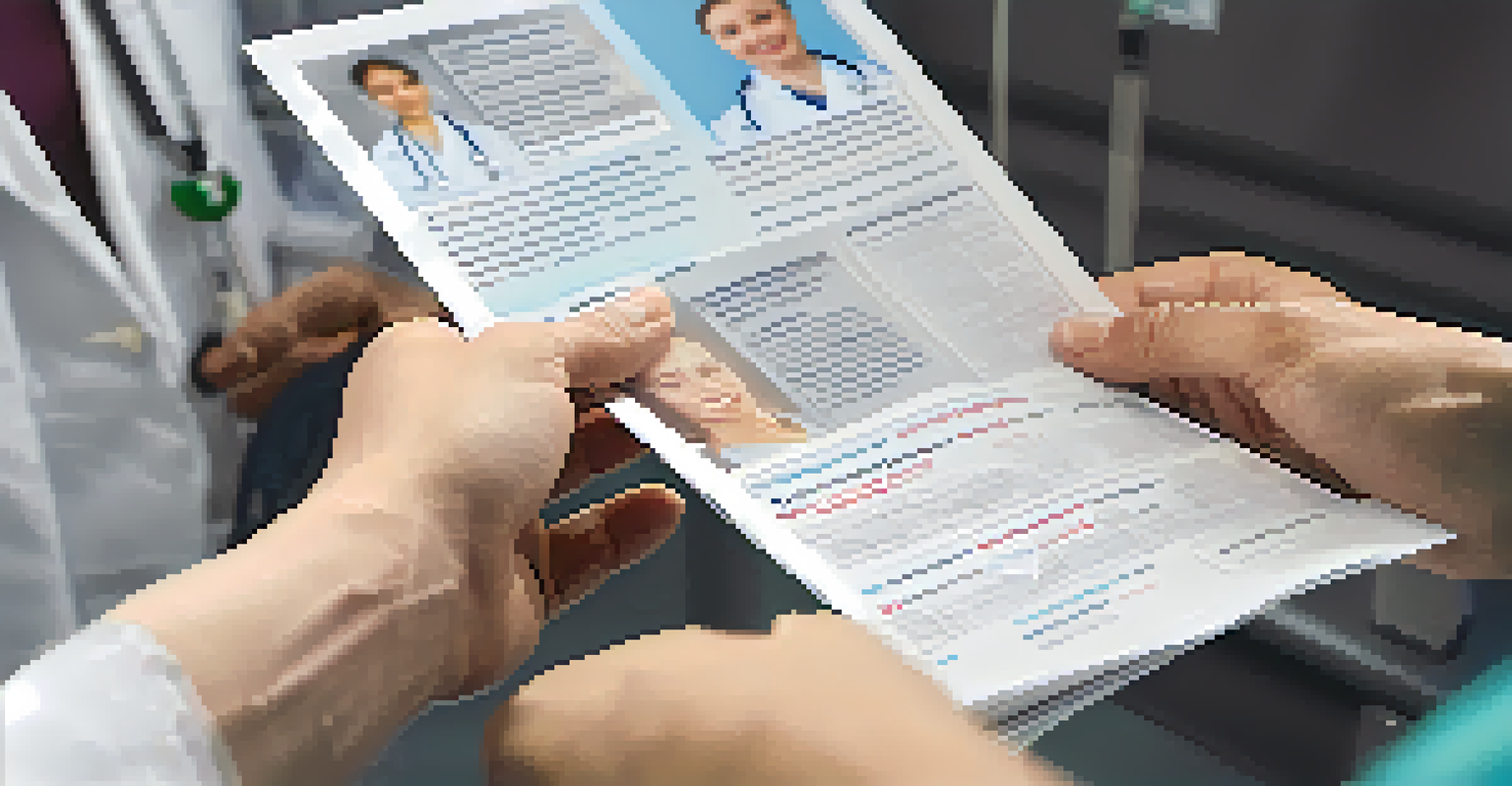Language Barriers and Their Impact on Healthcare Access

Understanding Language Barriers in Healthcare Settings
Language barriers occur when communication between healthcare providers and patients is hindered by differences in language. This challenge affects millions of individuals, especially those who speak limited English or belong to non-English speaking communities. It's crucial to understand these barriers as they can lead to misunderstandings, misdiagnoses, and inadequate treatment.
The single biggest problem in communication is the illusion that it has taken place.
For instance, a Spanish-speaking patient may struggle to articulate symptoms to an English-speaking doctor, resulting in a less accurate diagnosis. Moreover, language barriers can also affect a patient's ability to follow medical advice or understand treatment plans properly. This situation highlights the need for effective communication tools in healthcare.
Ultimately, recognizing language barriers is the first step toward addressing them. By acknowledging this issue, healthcare providers can take proactive measures to facilitate better communication, ensuring that all patients receive the care they need.
Impact on Patient Outcomes and Satisfaction
Language barriers significantly affect patient outcomes, often leading to lower satisfaction rates among patients. When patients cannot communicate their needs effectively, it can result in feelings of frustration and helplessness. This emotional strain can deter individuals from seeking necessary medical care in the future.

For example, studies show that patients with limited English proficiency are less likely to return for follow-up appointments or adhere to treatment plans. This trend can lead to worsening health conditions, ultimately straining healthcare systems further. Thus, the impact extends beyond individual patients, affecting overall public health.
Language Barriers Affect Care
Communication challenges can lead to misunderstandings and inadequate treatment for patients.
Improving communication can enhance patient satisfaction and health outcomes, fostering trust between patients and healthcare providers. When patients feel understood and respected, they are more likely to engage actively in their care, leading to better health results.
Economic Consequences of Language Barriers
The economic implications of language barriers in healthcare are profound and multifaceted. When patients face communication challenges, it often leads to longer hospital stays, unnecessary tests, and repeated visits, all of which increase healthcare costs. This inefficiency not only burdens the healthcare system but also impacts patients financially.
Language is the road map of a culture. It tells you where its people come from and where they are going.
For instance, a patient who cannot understand discharge instructions may return to the emergency room due to complications that could have been avoided. These additional costs can create a cycle of financial strain for both patients and healthcare facilities. Therefore, addressing language barriers is not just a matter of improving communication but also a way to enhance economic efficiency.
Investing in translation services and culturally competent care can result in significant savings in the long run. By ensuring effective communication, healthcare providers can reduce unnecessary expenses while improving care quality.
Cultural Sensitivity and Language Proficiency
Cultural sensitivity plays a crucial role in overcoming language barriers in healthcare. Understanding a patient’s cultural background can help providers tailor their communication strategies effectively. It’s important to recognize that language is not just about words; it also involves understanding context, values, and beliefs.
For example, certain cultures may have unique health practices or beliefs that influence how they perceive medical advice. By being culturally sensitive, healthcare providers can foster a more welcoming environment for patients. This approach encourages open dialogue, helping to bridge the gap between language and understanding.
Cultural Sensitivity Enhances Care
Understanding cultural backgrounds helps healthcare providers tailor their communication and improve patient experiences.
Moreover, training healthcare staff in cultural competency can enhance their ability to communicate with diverse populations. This training equips providers with the tools they need to navigate complex cultural dynamics, ultimately improving patient care.
The Role of Technology in Bridging Language Gaps
Technology offers innovative solutions to address language barriers in healthcare. Telehealth platforms, for instance, can include multilingual options that allow patients to consult with providers in their preferred language. Additionally, translation apps can facilitate real-time communication during appointments, enhancing the overall patient experience.
Moreover, electronic health records (EHR) can be designed to incorporate language preference data, ensuring that patients are matched with providers who can communicate effectively. This proactive approach can significantly reduce misunderstandings and improve care coordination.
As technology continues to evolve, the potential for creating more inclusive healthcare systems grows. By integrating these tools, healthcare providers can better serve diverse populations, ensuring that language is no longer a barrier to accessing quality care.
Best Practices for Healthcare Providers
To effectively address language barriers, healthcare providers can adopt several best practices. First, hiring bilingual staff or offering language training for existing employees can greatly enhance communication. This strategy not only helps in understanding patients better but also makes them feel more comfortable during their visits.
Second, utilizing professional interpreters during patient interactions can ensure accurate translations and minimize misunderstandings. While family members may sometimes assist, relying on trained interpreters is crucial for sensitive or complex medical discussions. This practice also protects patient confidentiality and privacy.
Technology Bridges Communication Gaps
Innovative tools like telehealth and translation apps can significantly enhance communication between patients and providers.
Lastly, creating informational materials in multiple languages can empower patients with knowledge about their health. Providing resources that patients can understand fosters a sense of autonomy and encourages them to take an active role in their healthcare journey.
Policy Recommendations for Improving Access
Effective policy changes are essential to address language barriers in healthcare. Governments and health organizations should prioritize funding for language access services, ensuring that all patients can communicate effectively with providers. This investment can lead to better health outcomes and reduced healthcare costs over time.
Additionally, implementing regulations that require healthcare facilities to provide language assistance services can create a more equitable environment for all patients. By mandating these services, healthcare systems can ensure that language barriers do not impede access to care.

Finally, raising awareness about the importance of language access among healthcare professionals can promote a culture of inclusivity. Training programs and workshops can help instill the value of effective communication, ultimately benefiting both patients and providers.
The Future of Language Access in Healthcare
Looking ahead, the future of language access in healthcare appears promising. As awareness grows about the importance of effective communication, more healthcare organizations are prioritizing language services. This shift can lead to transformative changes in how care is delivered to diverse populations.
Moreover, advancements in technology will continue to play a significant role in bridging language gaps. From AI-powered translation tools to virtual interpretation services, the possibilities for enhancing communication are endless. These innovations can help ensure that language barriers become a relic of the past.
Ultimately, fostering an inclusive healthcare environment where all patients can communicate freely is vital. By continuing to address language barriers, we can create a healthcare system that truly serves everyone, regardless of their language background.